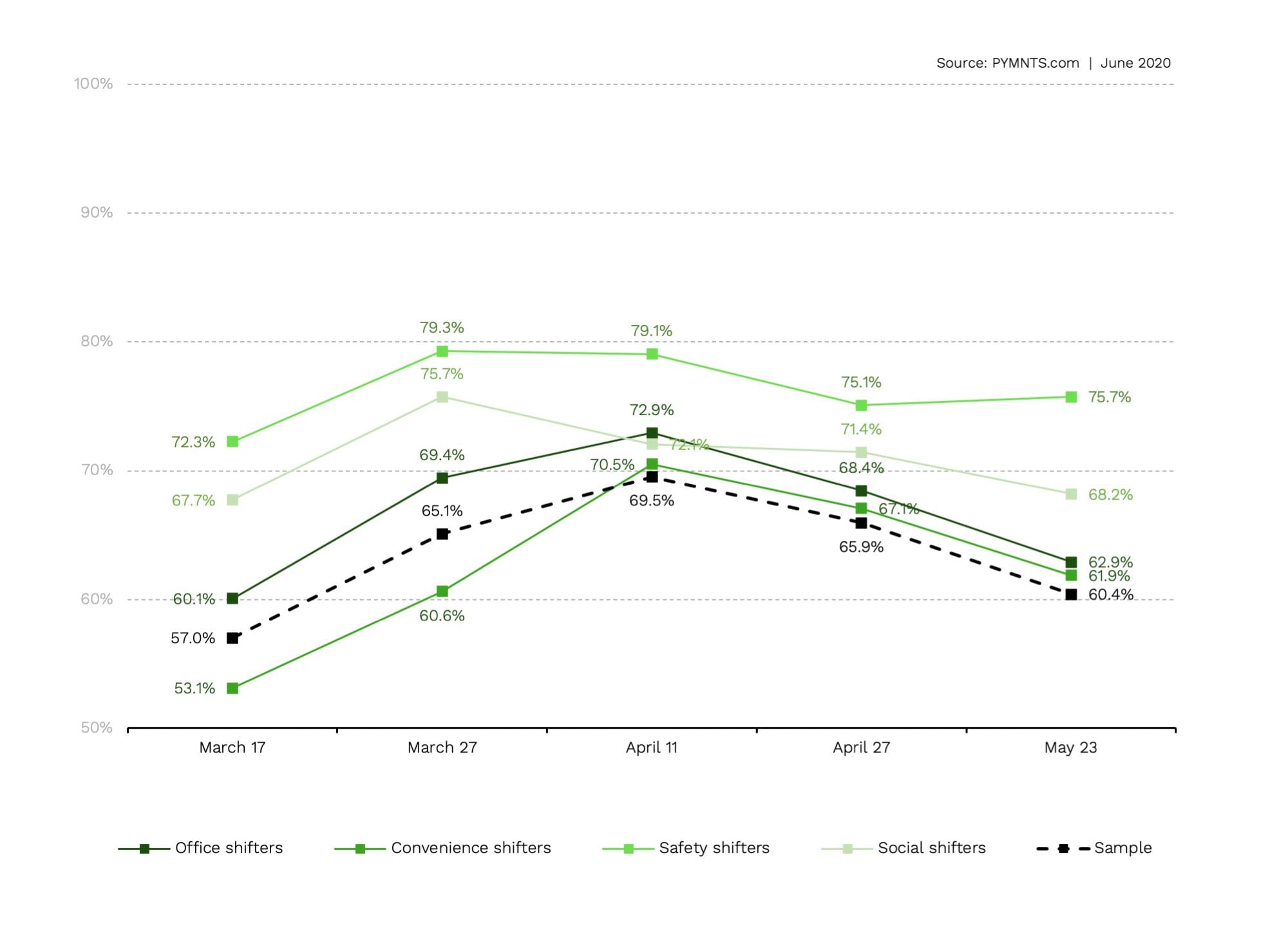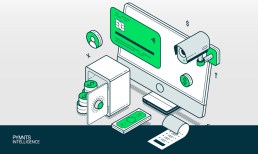If asked a year ago if they could imagine missing sitting in traffic during their morning commute, we imagine the vast majority of American workers would have said no. Most people can agree that sitting in a traffic jam has no redeeming qualities.
Asked that same question today, however, we imagine a greater diversity of answers. While no one is eager to get back to an up-close view of someone else’s bumper, Americans have learned that they miss having that time to listen to the radio and drink their coffee, while enjoying the experience of having somewhere to go.
In short, a large swath of the population misses going to work each day, and would very much like to opt-out of their new reality of sweatpants and Zoom calls and back to one that involves daily physical interactions with their co-workers and pants with buttons. PYMNTS data identifies this cohort of consumers as “office shifters” — consumers who have shifted to working from home and want to go back to being outdoors and working in office environments.
 According to recent reports, those consumers still have some waiting left to do, as a slow vaccine rollout is holding back the pace of office reopenings. The New York Times has declared that “July is the new January,” as firms across the board have been extending their work-from-home periods to July and even into September of this year out of a concern for workers’ safety. In the past week, Microsoft, Target, Ford Motor Company and The New York Times have joined firms like Google, Uber, Slack, Stripe, Salesforce, Zillow, Amazon, Apple and Airbnb in postponing the return of in-person work until next summer.
According to recent reports, those consumers still have some waiting left to do, as a slow vaccine rollout is holding back the pace of office reopenings. The New York Times has declared that “July is the new January,” as firms across the board have been extending their work-from-home periods to July and even into September of this year out of a concern for workers’ safety. In the past week, Microsoft, Target, Ford Motor Company and The New York Times have joined firms like Google, Uber, Slack, Stripe, Salesforce, Zillow, Amazon, Apple and Airbnb in postponing the return of in-person work until next summer.
“Let’s just bite the bullet,” said Joan Burke, the chief people officer of DocuSign in San Francisco. “We’re still in a place where this is evolving. None of us have all the answers.”
But a big part of that answer, it seems, will be in the distribution of the vaccine itself, as PYMNTS’ data shows that 59 percent of consumers say they would need to know that a COVID-19 vaccine was readily available before feeling comfortable returning to their pre-pandemic routines.
Advertisement: Scroll to Continue
And the vaccine rollout has notably been slow, as most states are well below target vaccination rates set in late 2020. Infection rates and the death count has fallen nationwide, but the big expansion in the work-from-home rollout period in the last several weeks underscores the fact that efforts to bring the pandemic period to a close have produced results more slowly than desired.
Desired being the operative word — PYMNTS data clearly indicates that office shifters would very much like to get back to working in their offices and leading their lives outside of their homes. Forty percent of office shifters told PYMNTS they are “very” or “extremely interested” in getting back out there, particularly to their workspace, with 47.8 percent reporting a desire to get back on-site compared to 24 percent of the sample average.
What’s keeping these workers away from their workspaces as is the same thing that’s forcing employers to extend their work-from-home windows today: concern about the virus. PYMNTS data found that 60.4 percent of the general population are very or extremely concerned about the virus, while nearly 63 percent of office shifters reported concern.
The slow place of worker returns likely means a slower pace of recovery in urban areas, as financial district restaurateurs won’t have workers to serve at lunchtime, gas stations won’t be providing fill-ups for commuters and coffee shops won’t be brewing up as many morning lattes. Apparel makers specializing in office wear will also likely continue to see a dearth of shoppers, as consumers working from home have developed a fondness for sweatpants.
In order for the city to return to “normal” economic life, it seems that daily workers are a critical ingredient. And until the vaccine progress picks up and offices reopen and bringing workers back to their desks, the recovery of all those that depend on their economic activity will likely remain sluggish in the near term.
Read More On COVID-19:

 According to
According to 


